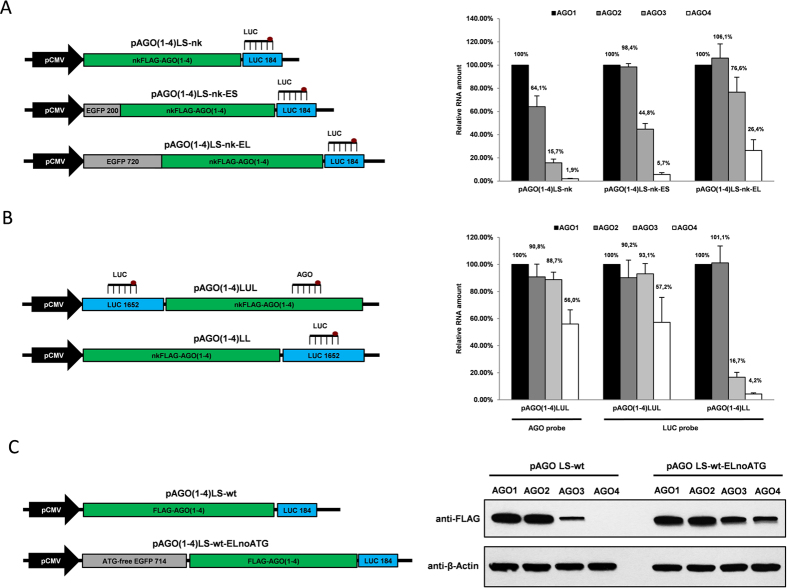Figure 4. The distance of AGO3 and AGO4 coding sequences to the CMV promoter is critical for their expression in human cells.
(A) (Left): Structure of pAGO(1–4)LS-nk, pAGO(1–4)LS-nk-ES and pAGO(1–4)LS-nk-EL used for transient overexpression of AGO coding regions containing either short 200 bp or full-length 720 bp EGFP gene (without the initiating ATG codon) respectively upstream. (Right): TaqMan qRT-PCR analysis of recombinant mRNAs generated from these plasmids in U2OS cells 24 h after transfection. (B) (Left): Structure of pAGO(1–4)LUL containing full-length 1652 bp luciferase gene (without the initiating ATG codon) upstream the AGO coding sequences, and pAGO(1–4)LL plasmids containing the same 1652 bp luciferase gene fragment downstream the AGO coding sequences. (Right): TaqMan qRT-PCR analysis of recombinant mRNAs generated from these plasmids in U2OS cells 24 h after transfection. The location of luciferase (LUC) and Argonaute-specific (AGO) TaqMan qPCR assays used is indicated on the corresponding plasmid map. All qPCR data is presented as mRNA levels relative to cells transfected with AGO1 encoding plasmids, and normalized on the NeoR mRNA levels for each transfection. Each bar represents mean + S.D of three independent transfections. (C) (Left): Structure of the parental pAGO(1–4)LS-wt and the derivative pAGO(1–4)LS-wt-ELnoATG construct containing the 714 bp EGFP cDNA deprived from all ATG codons upstream the AGO coding regions. (Right): Western immunoblot performed with anti-FLAG and anti-β-actin antibody showing FLAG-AGO1, FLAG-AGO2, FLAG-AGO3, FLAG-AGO4 and actin proteins expression in U2OS cells 24 h after transfection with pAGO(1–4)LS-wt and pAGO(1–4)LS-wt-ELnoATG.

